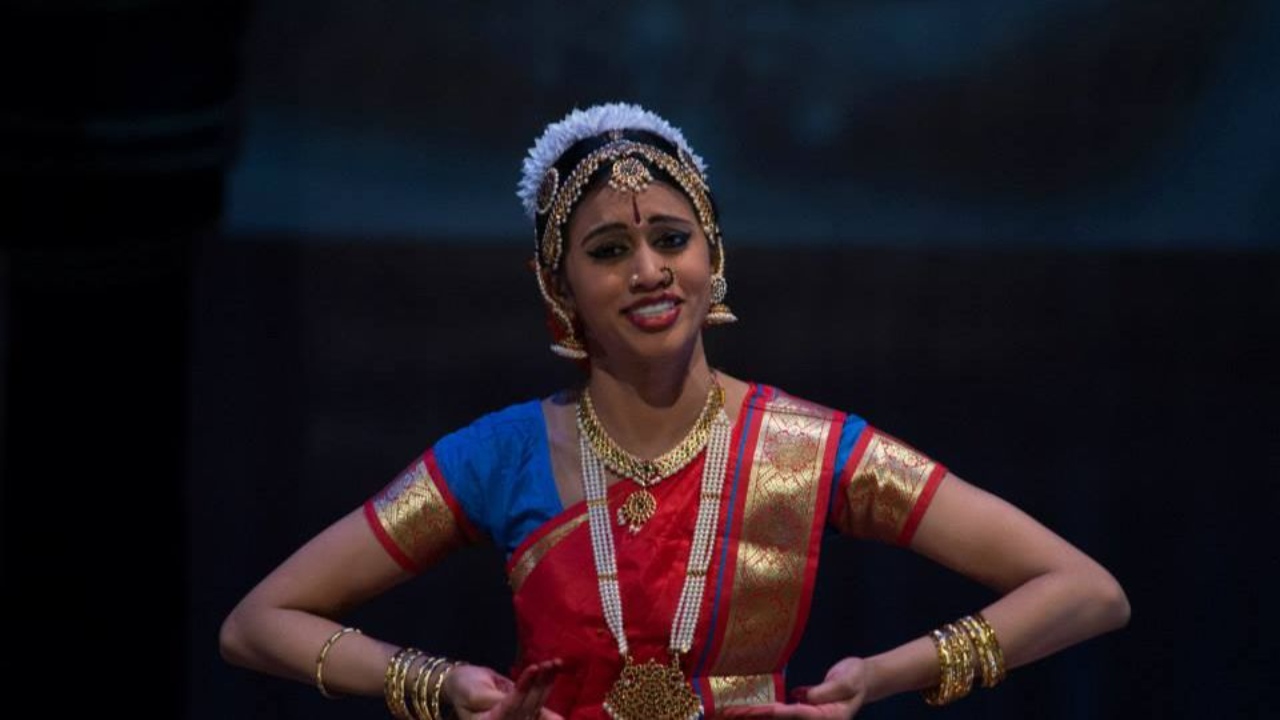Put Your Dance Face On
Dec 01, 2023
Do you ever wonder how the dancers in Bollywood, Hollywood, or any music videos ever, have very vivid facial expressions? Starting at the age of 4, I was trained in Bharatanatyam. For those that do not know, Bharatanatyam is a classical Indian dance form that originates in South India. It is one of the oldest dance forms and started as a temple dance performed by Devadasis (women dancers). It has been passed down from generation to generation and is now an ancient, but popular, Indian dance style.
In Bharatanatyam, we are taught Abhinaya, meaning leading an audience towards. We use Abhinaya to depict stories, ideas, and emotions through our facial expressions. As a dancer, he or she must master the different facial expressions to completely interact and intrigue an audience. It was not enough to smile throughout a performance. A dancer knows when to frown, smile, raise the eyebrow, lip sync or keep a blank face. I always tell my students to change up their expressions on stage so they don't have what I refer to as a ‘frozen smile’. We change our facial expressions every other minute in our day to day - we can definitely do it for a performance! This is what adds to making the performance come alive, from the movement of your body to the expressions on your face—it all goes together to depict joy, sadness or excitement.
With that said, facial expressions require practice like anything else. It is not done the first time performing. I personally hated practicing facial expressions in class. My dance teacher always stressed the need to practice expressions in class so it wouldn’t even be a second thought on stage. She was right! Just like you learn a dance, you learn the facial expressions that correspond with your movements the more you practice and as you practice. We enjoy dances filled with enthusiasm and energy – half of that energy is implemented through our facials.
Facial expressions play a crucial role in bollywood dance, as they help convey emotions, enhance storytelling, and connect the dancer with the audience. Different dance styles may emphasize facial expressions to varying degrees, but overall, expressive faces contribute to the overall impact and communication of the dance. Here are some ways in which facial expressions are utilized in dance:
-
Emotional Expression: Facial expressions are a powerful tool for conveying emotions. Whether it's joy, sorrow, anger, love, or any other emotion, the dancer's face can amplify the mood of the dance and make it more relatable to the audience.
-
Storytelling: In narrative or thematic dance pieces, facial expressions are used to tell a story. Dancers use their faces to depict characters, communicate relationships, and convey the plot, creating a more immersive experience for the audience.
-
Connection with the Audience: A dancer's face is a key element in establishing a connection with the audience. Eye contact, smiles, and other expressions engage the viewers and draw them into the performance, making it a more personal and impactful experience.
-
Musical Interpretation: Facial expressions in dance often reflect the nuances of the music being performed. Dancers may synchronize their expressions with the rhythm, melody, and dynamics of the music, enhancing the overall harmony of the performance.
-
Style-Specific Expressions: Different dance styles may have specific facial expressions that are integral to the form. For example, classical ballet often includes a range of facial expressions to complement the movements, while hip-hop and other urban dance styles may incorporate more intense or playful expressions.
-
Dynamic Range: Skilled dancers can modulate their facial expressions to match the dynamics of the choreography. This includes adjusting the intensity of expressions based on the energy level of the dance, creating a dynamic and visually engaging performance.
-
Facial Control: Dancers often undergo training to develop control over their facial muscles. This enables them to maintain specific expressions consistently and switch between emotions smoothly, contributing to the overall polish of their performance. This is essential in indian dance because of it's expressive nature.
-
Authenticity and Presence: Genuine and authentic facial expressions contribute to a dancer's stage presence. A sincere connection with the emotions portrayed in the dance adds authenticity and captivates the audience.
In summary, facial expressions in dance are a vital component of the art form, serving as a means of emotional communication, storytelling, and connection. Dancers use their faces to express a wide range of emotions, enhance the narrative, and create a more compelling and memorable performance


